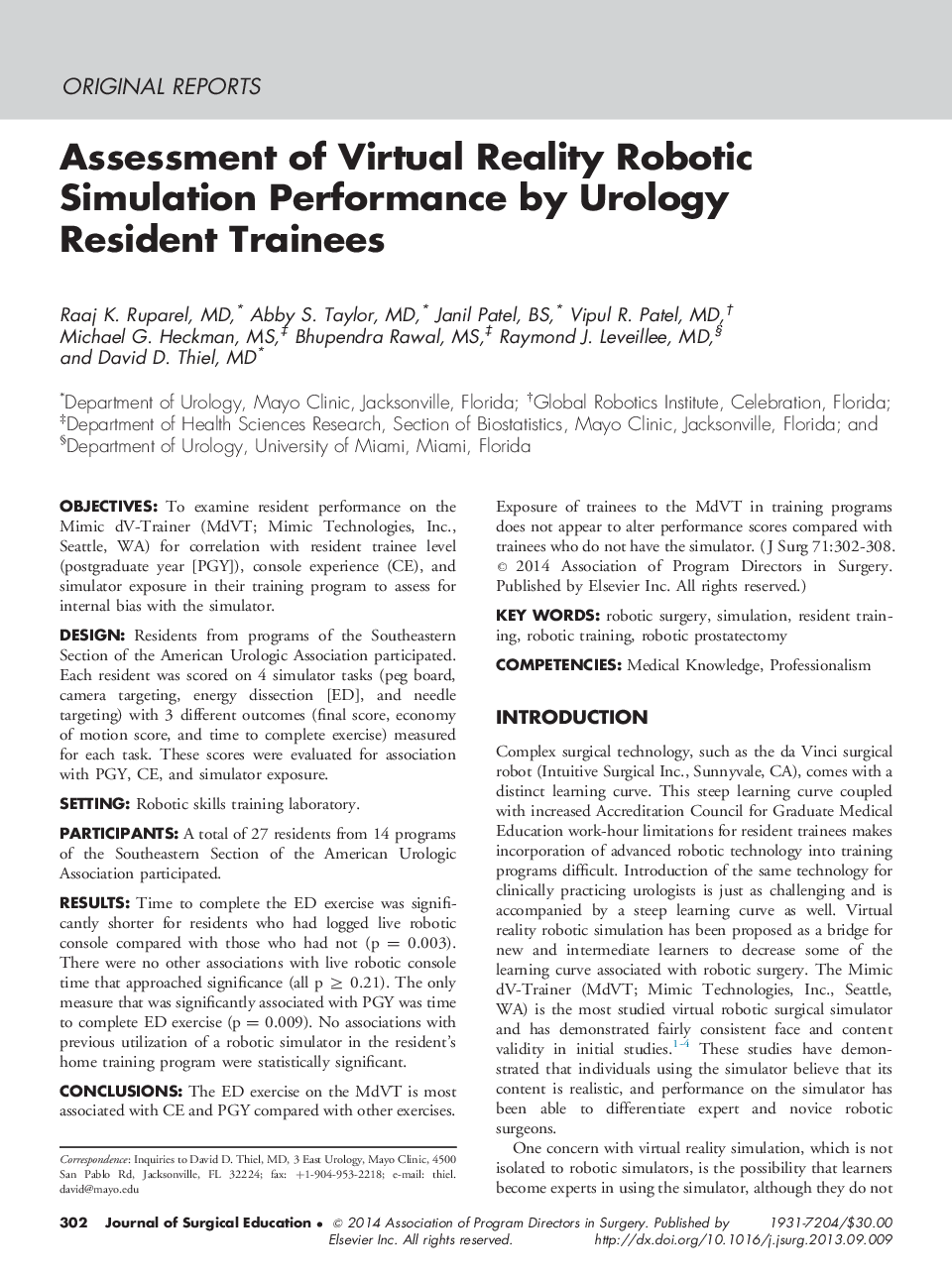| Article ID | Journal | Published Year | Pages | File Type |
|---|---|---|---|---|
| 4297863 | Journal of Surgical Education | 2014 | 7 Pages |
ObjectivesTo examine resident performance on the Mimic dV-Trainer (MdVT; Mimic Technologies, Inc., Seattle, WA) for correlation with resident trainee level (postgraduate year [PGY]), console experience (CE), and simulator exposure in their training program to assess for internal bias with the simulator.DesignResidents from programs of the Southeastern Section of the American Urologic Association participated. Each resident was scored on 4 simulator tasks (peg board, camera targeting, energy dissection [ED], and needle targeting) with 3 different outcomes (final score, economy of motion score, and time to complete exercise) measured for each task. These scores were evaluated for association with PGY, CE, and simulator exposure.SettingRobotic skills training laboratory.ParticipantsA total of 27 residents from 14 programs of the Southeastern Section of the American Urologic Association participated.ResultsTime to complete the ED exercise was significantly shorter for residents who had logged live robotic console compared with those who had not (p = 0.003). There were no other associations with live robotic console time that approached significance (all p ≥ 0.21). The only measure that was significantly associated with PGY was time to complete ED exercise (p = 0.009). No associations with previous utilization of a robotic simulator in the resident’s home training program were statistically significant.ConclusionsThe ED exercise on the MdVT is most associated with CE and PGY compared with other exercises. Exposure of trainees to the MdVT in training programs does not appear to alter performance scores compared with trainees who do not have the simulator.
